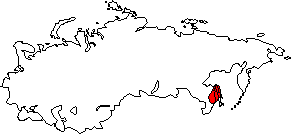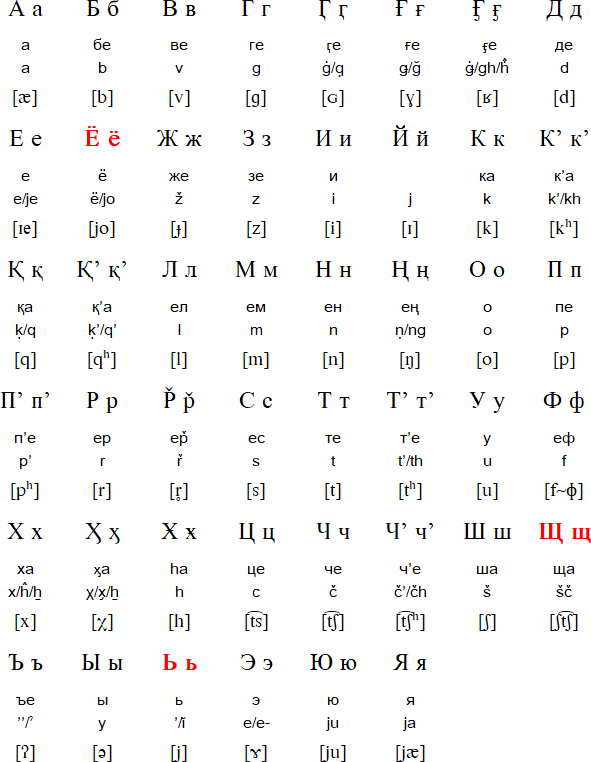THE NIVKHS AND THEIR LANGUAGE
The Nivkhs are called many names, and certain Nivkh-families started naming themselves after the places they lived. A few names:
For the people living on the river Amur - Nivh
For the people on Sakhalin Island - N'ivhgn-N'ivgn
To the Manchus - Gilyak
For "the people on the river Chom" - Chombing
For"the people on the river My" - Mybing
To the Russians - Nivkh
The earliest historical data concerning the Nivkhs dates back to a 12th century Chinese chronicle. Someone concluded that the people called Tszi-lya-mi on the lower Amur were actually the Nivkhs. In the 17th century, the Nivkhs are referred to in the reports written by the Russian Cossacks (Vasily Poyarkov 1643--46, Yerofey Khabarov, etc).
The Nivkhs live in the Far East, on the Lower Amur, on the coast of Ohkotsk Sea on the river's estuary. They also live in Sakhalin Island (Yh-mif in the Nivkh language). Administratively speaking, they belong to the Kharabovsk district of the Russian Federation (the districts of Takhatin and Lower Amur), and the Sakhalin region (the districts of Rybinov, Kirov, Alexandrov and Shirokopad). In the past, their habitation was more extensive. The Nivkh population is not compact and they mostly live side by side with the Russians or the Negidal people.
A monsoon climate prevails on the lowlands of the Lower Amur. There is abundant snow in winter but the summers are warm and humid. The average temperature in July is 12 to 16 °C and in January -- 15 to 25 °C.
Anthropologically the Nivkhs belong to the Sakhalin-Amur sub-group of the Mongoloid racial type. They are of short stature (men approx. 160 cm). They have a broad flat face, a snub nose and thick lips. Unlike other Mongoloid peoples, they have a relatively dark skin, and dark eyes and hair. They have remarkably dense beards, a supposed influence of the Ainu.
Of course I have some pictures for you:
 These are native Nivkh speakers Sergei and Natasha Firun with their children in the town of Liugi, on the northwest coast of Sakhalin Island, June 1990, courtesy of Bruce Grant.
These are native Nivkh speakers Sergei and Natasha Firun with their children in the town of Liugi, on the northwest coast of Sakhalin Island, June 1990, courtesy of Bruce Grant.As for Nivkh language-acquisition: in some settlements in Nogliki and Nekrasovka the first three classes of boarding school are taught entirely in the language. Other than that, Nivkh can be studied at the Herzen Institute in St. Petersburg.
The future for the Nivkhs themselves doesn't look too rosy either: gigantic oil corporations from Japan, the U.S. and even the Netherlands (no Dutch pride, man) are threatening to take over Sakhalin land. Despite protests from the inhabitants and environmental organisations, the oil companies shan't be leaving any time soon. Shell has already started to exploit the oil and gas-riches in the Russian Far East, together with two Japanese partners. The Sakhalins are afraid that their ecosystem will be ruined, and quite frankly it will be. We know Russia! The Nivkhs' diet predominantly consists of fish, but due to the laying of pipelines, not much fishing will be done anymore in the near future.
You know what that means, right? It means we need to undertake some action to preserve this one of a kind language.
THE LANGUAGE
Nivkh vocabulary is quite rich when it comes to own words. This is remarkable, seeing as the natural environment the Nivkh people live in is quite primitive. Newer words are usually borrowed from Russian.
At one point in time, Nivkh was written down in the Roman alphabet. In the 1930s this was changed to the Cyrillic alphabet.
Nivkh is a synthetic language; this means that most Nivkh words consist of a large number of morphemes. In the area where Nivkh is spoken, many other agglutinative languages exist. Agglutinative languages use many affixes (=prefixes, infixes and suffixes).
However, Nivkh also uses a lot of fusional elements. According to many linguists, fusional languages are the opposite of agglutinative languages, but obviously this is a very arbitrary rule.
Nivkh also has a unique system of cardinal numbering: it consists of 26 subsystems. Each subsystem is used for counting a specific type of object (such as machines, animals, people, etc.). Nivkh is also (un)known for its auxiliaries. There are about thirty and they are used in combination with the head verb to indicate a specific purpose of the verb.
The three dialects
As was already mentioned, Nivkh can be subdivided into three dialects: Amur, East-Sakhalin and North-Sakhalin. The Amur and East-Sakhalin dialects are so different, that they are basically mutually unintelligible. This is because the Amur and the East-Sakhalin have a very different pronunciation, grammar, and vocabulary. Some linguists argue that they are actually two seperate languages, not dialects.
North-Sakhalin is somewhere in between the other two.
To go even further, the dialects can be subcategorised into local language variants.
Endangered?
Hell yes. The number of native Nivkh-speakers has been on the decline for over a century and, though sources vary, there are less than a thousand speakers left. All dialects are endangered, but it is speculated that the Amur Nivkh will die out the first. Anyone willing to bet me on this?
Apparently Nivkh is a very complicated hard to learn language and hardly understood by non-Nivkh neighbours. It is because of this, that most Nivkhs nowadays speak Russian as their first language. Nivkh is almost exclusively spoken in family and informal circles, and it is mainly the older people who speak it (50-plus).
Attempts have been made to preserve the language. For instance in some schools, where Nivkh is the main language of instruction. But the future is bleak for Nivkh, because of a low population and the different dialects.
*Population. The following census data is given for the Nivkhs:
| native speakers | ||
| 1897 | 4,549 | |
| 1926 | 4,076 | 99.6 % |
| 1959 | 3,717 | 76.3 % |
| 1970 | 4,420 | 49.5 % |
| 1979 | 4,397 | 48.1 % |
| 1989 | 4,673 | 23.3 % |



